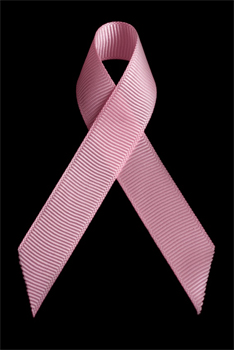November 24, 2008
Designer Chemicals Destroy Breast Cancer Tumors

By Michael D. Shaw
Dr. James Turkson was only just starting college in Ghana, when his 52-year-old mother died of uterine cancer. This sad event provided the inspiration for Turkson to devote himself to finding a cure for cancer, and his lab has recently reported some very promising results.
Turkson’s lab at the University of Central Florida’s Burnett School of Biomedical Sciences investigates critical signaling pathways in the context of carcinogenesis. Of special interest is the so-called STAT3 protein (Signal Transducer and Activator of Transcription 3). STAT3 has been implicated in diverse human tumors and is required for carcinogenesis and tumor progression.
“We all have the STAT3 protein in our bodies, and under normal circumstances it causes no harm. But in breast cancer patients, the protein is abnormally active. It never shuts off,” explains Turkson.
With an abnormally active STAT3, breast cancer cells flourish. This STAT3 also sets up a support system for the cancer cells by providing an extensive network of nurturing blood vessels, that spread the cancer to other tissue and organs. In the meantime, the abnormally active STAT3 has even fooled the immune system into thinking that the cancer cells are harmless.
Turkson’s primary goal is to develop inhibitors of cancer relevant signaling pathways, which would disrupt tumor processes, and thus be utilized in cancer therapy.
The most recent work in his lab has yielded two special compounds he calls S3I-201 and S3I-M2001. Both of these new chemicals disable certain bonding mechanisms in STAT3. As Turkson puts it, “Our compounds go after STAT3, stripping away its power.”
Experiments on mice have demonstrated the efficacy of these compounds: With the abnormally active STAT3 knocked out, the cancer-nourishing blood vessels close down and the cancer cells die. Likewise, the immune system gets smart again, and kills the remaining cancer cells. Of course, Turkson is pleased with the results.
“The compounds are very promising,” Turkson said. “They’ve worked very well in mice, and now we’re looking for partners to help us take these compounds to the next level of trials.” Turkson’s research has been published in the academic journals Proceedings of the National Academy of Sciences and ACS Chemical Biology. He has obtained patents for both compounds.
This success has led to a recently-awarded contract (September 2008 through July 2012) from the National Institutes of Health entitled “Therapeutic Application of Novel STAT3 Inhibitors in Breast and Pancreatic Cancer.”
Turkson’s approach to the dreaded and far less survivable pancreatic cancer—owing to its lack of signs and symptoms until the disease is advanced—will involve synergy with the use of another drug.
Turkson, and others working on a molecular biology approach to fighting cancer, represent the new wave in therapies—expanding medicine’s arsenal beyond the traditional cutting, burning, and poisoning (surgery, radiation, and conventional chemotherapy.) Many believe that the only hope for a comprehensive cancer cure lies at the molecular level.
Meanwhile, we wait to see if Turkson will be able to cure humans as well as he has cured mice.

